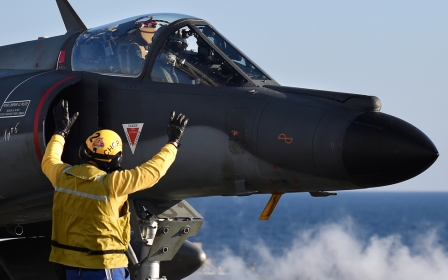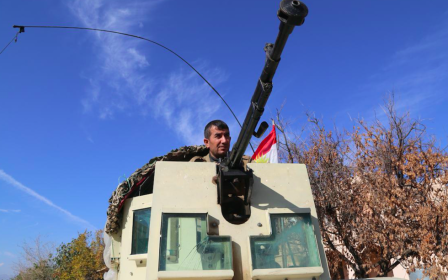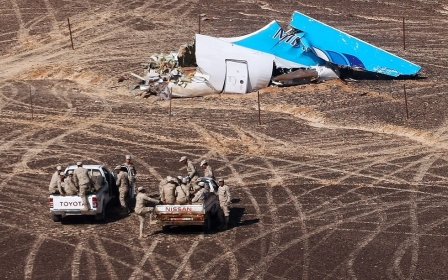IS lost more than a tenth of territory in 2015: report

The Islamic State (IS) group lost around 14 percent of its territory in 2015, while Syria's Kurds almost tripled the land they control, thinktank IHS Jane's said on Monday.
The group's losses include the strategically important town of Tal Abyad on Syria's border with Turkey, the Iraqi city of Tikrit, and Iraq's Baiji refinery.
Other big losses for the group include a stretch of highway between its Syrian stronghold Raqqa and Mosul in northern Iraq, complicating supply lines.
"We had already seen a negative financial impact on the Islamic State due to the loss of control of the Tal Abyad border crossing prior to the recent intensification of air strikes against the group's oil production capacity," said Columb Strack, IHS senior Middle East analyst.
The US-based thinktank said the group's territory had shrunk 12,800sq km to 78,000sq km between the start of the year and 14 December.
However, IS has made some high-profile gains during the year, including the historic Syrian town of Palmyra and the city centre of Ramadi, the provincial capital of Anbar, Iraq's largest province.
IHS said those victories came at the expense of the group's northern territories, which have been fiercely contested by Kurdish fighters.
Lands under Syrian Kurdish control jumped 186 percent over the year, IHS said.
"This indicates that the Islamic State was overstretched, and also that holding Kurdish territory is considered to be of lesser importance than expelling the Syrian and Iraqi governments from traditionally Sunni lands," Strack said.
"The Kurds appear to be primarily an obstruction to the Islamic State, rather than an objective in themselves."
Syrian Kurdish fighters dominate a group called the Syrian Democratic Forces, a coalition of Kurdish and Arab fighters battling hardline militants in northeastern Syria that has risen in prominence in recent months.
IS has also been beaten back by US-led coalition air strikes, Iraqi forces and Syrian rebels.
Iraq's government managed to claw back some six percent of its territory from IS in the past year, while Iraqi Kurds regained two percent of their lands.
The biggest territorial loser among the main actors in the Syrian conflict was the Syrian government, which lost 16 percent and is now left with around 30,000sq km, less than half the area controlled by IS and a fraction of Syria's total area of about 185,000sq km.
New MEE newsletter: Jerusalem Dispatch
Sign up to get the latest insights and analysis on Israel-Palestine, alongside Turkey Unpacked and other MEE newsletters
Middle East Eye delivers independent and unrivalled coverage and analysis of the Middle East, North Africa and beyond. To learn more about republishing this content and the associated fees, please fill out this form. More about MEE can be found here.





